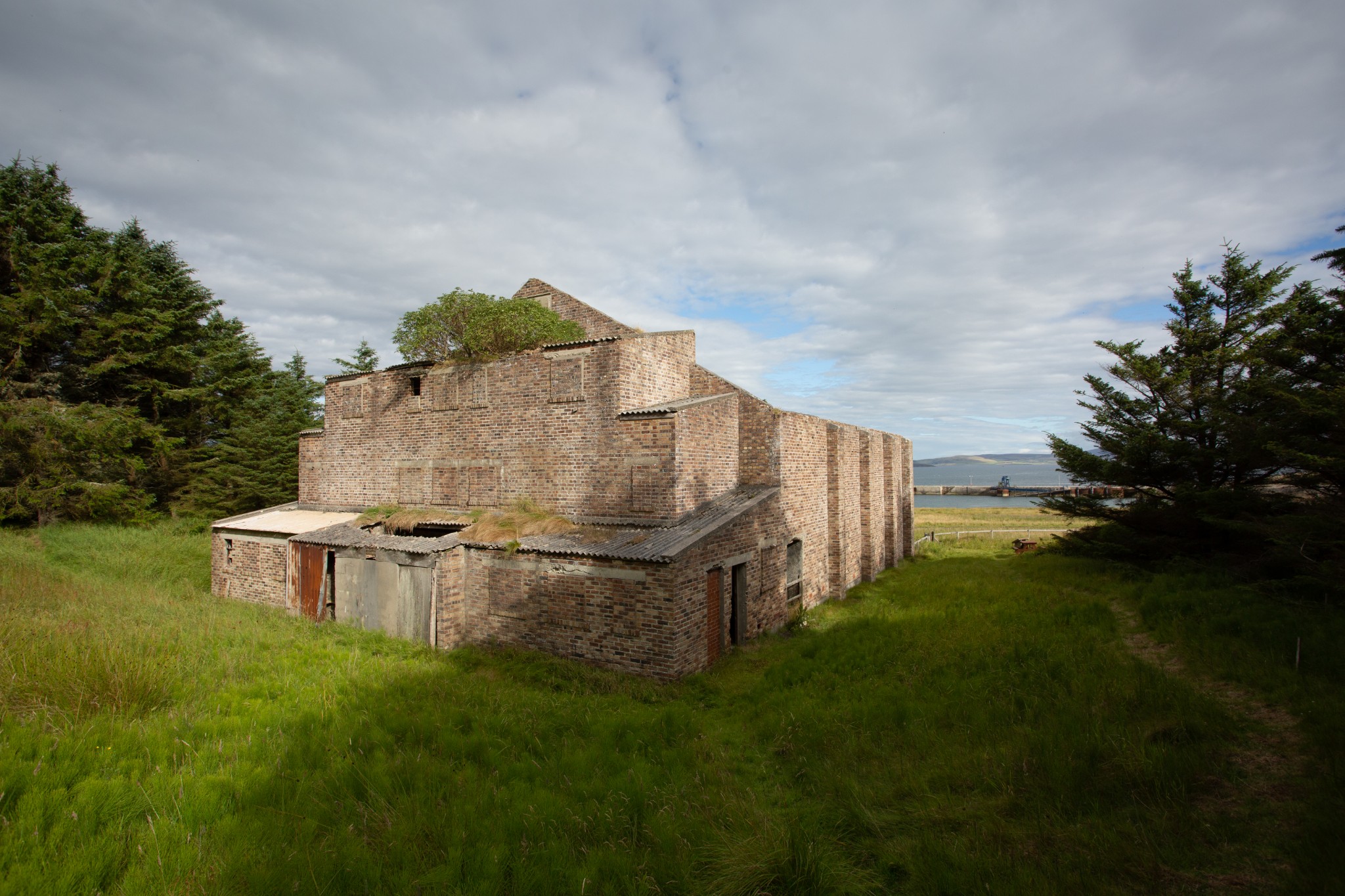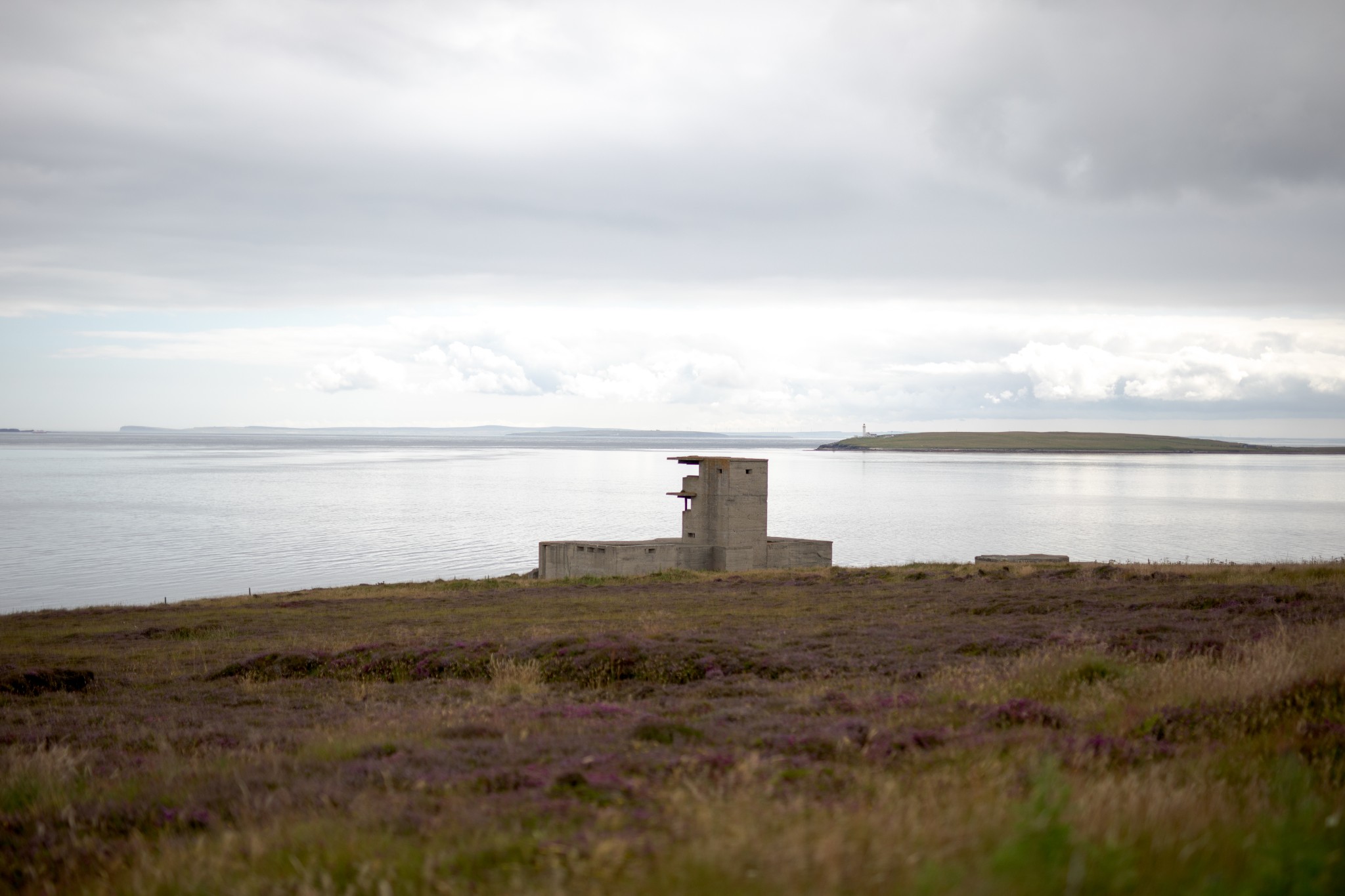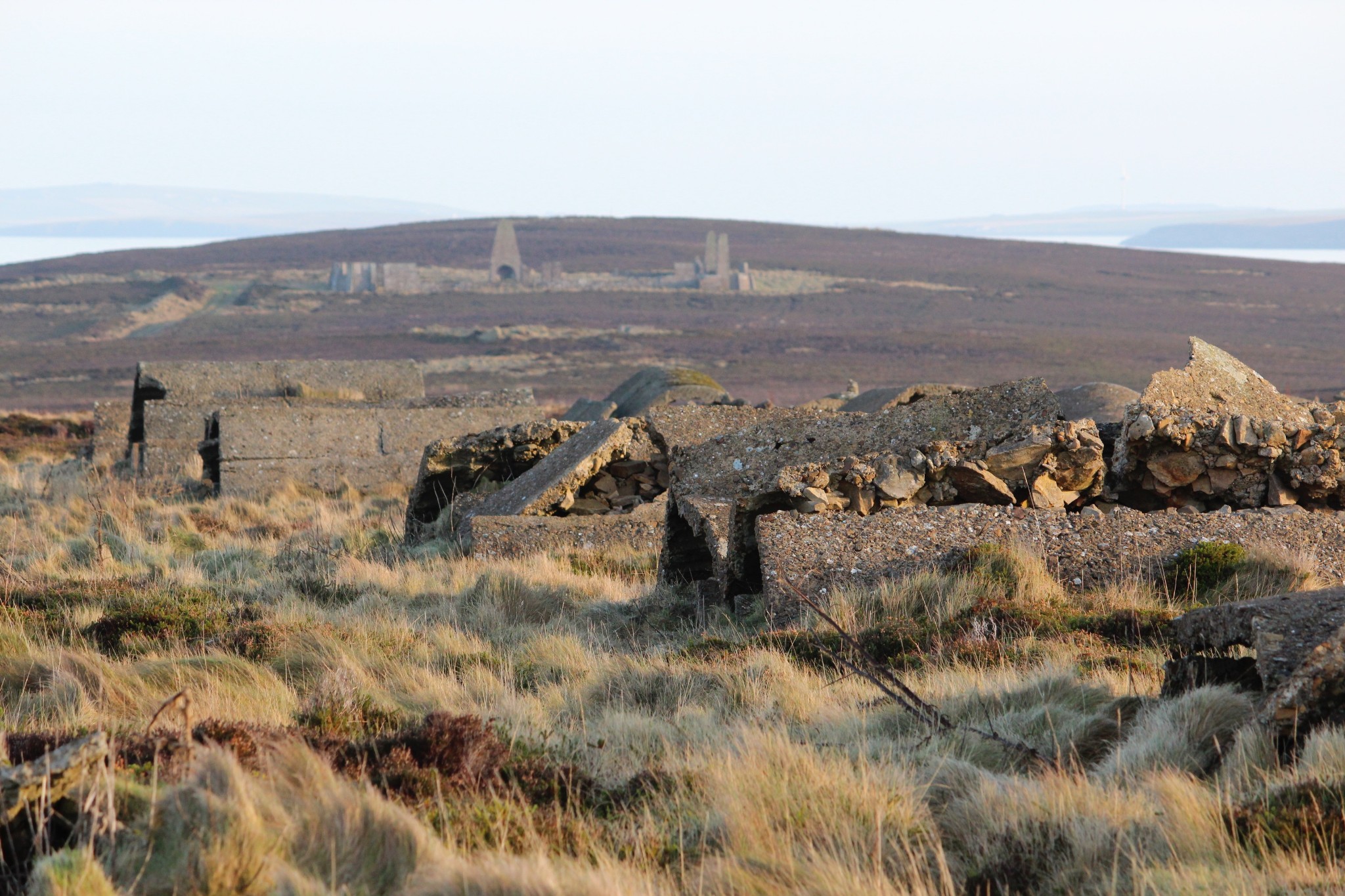Although there’s plenty of activity at the oil terminal that dominates its northern edge, the island of Flotta is a very peaceful place.
But during both World Wars, things were a lot different here. Thousands of servicemen and women were stationed in Flotta throughout the course of the conflicts because of Scapa Flow’s role as home of the Royal Navy. It’s hard to picture it these days, with its quiet roads and small population, but the wartime structures found across the island serve as a permanent reminder of Flotta’s military past.
The best way to experience it all is to walk or cycle the wartime trail. Here are some of the best sites you’ll see en-route.
Close to the island’s pier, you’ll see a large patch of woodland surrounding the impressive ruins of an old building. On closer inspection, it becomes clear that it used to be a cinema, with its distinctive shape and projector ports in the gable wall. The cinema was built to help keen naval ratings entertained during their time in Orkney, coming ashore at the nearby pier from ships of the Home Fleet. The conifers close by were originally planted by servicemen during World War Two, with thousands of trees added over the years by various oil terminal operators.
Continue west along the relatively rough coastal road and you’ll find Flotta’s famous penguins. Built by a local resident who repurposed leftover military equipment, these colourful characters will raise a smile as you continue on the route.
This impressive wartime site is found on the south-western tip of the island, overlooking neighbouring South Walls and Switha Sound. The battery complex housed quick-firing guns to tackle torpedo boats and searchlights to protect against enemy attempts to enter Scapa Flow. In fact, there are remains of various gun batteries from both World War One and World War Two in the area. Take a second to relax and enjoy the beautiful views across to Switha and Cantick Head Lighthouse.
You’ll see this building silhouetted on the horizon for much of this stage of the Flotta Wartime Trail. The Port War Signal Station controlled the movements of all shipping coming in and out of Scapa Flow’s southern approaches during World War Two. The Fire Command Post here also oversaw the various gun batteries covering the area. Don’t be tempted to enter the building as it is increasingly fragile.
Down by the headland, the Stanger Head Battery features the remains of gun emplacements and searchlight points from two World Wars.
This place played an important part in the defence of Scapa Flow. Look across the southern approach of the Flow to Hoxa Head and you’ll see its sister site, Balfour Battery. The Buchanan Battery is one of Orkney’s best-preserved buildings of its kind, but resist the temptation to explore inside as many wartime structures in the islands are in increasingly poor condition.
Just off the main road back to the pier, the Flotta Heritage Centre is an excellent place to stop and soak up some island history. There are wartime artefacts and stories alongside more details about Flotta’s early history and the building of the oil terminal.
Although not officially part of the Flotta’s Wartime Trail, Golta is a fascinating place to explore if you have time before your ferry. It’s home to the remains of the Z Battery, part of the fearsome Scapa Barrage that erupted when enemy planes were overhead. Golta also hosts the eerie ruins of the First World War YMCA, a recreation hub for Naval personnel, and the St Vincent Pier, so-named as it was built by men from HMS St Vincent. Look closely at the shore here and you’ll see tons of dumped boom defence nets used to protect against U-boat attack. There are also bomb craters in the area created during air raids during the Second World War.
Access to Golta is only allowed with permission from the Flotta Oil Terminal security – you can contact them on 01856 884 359.





